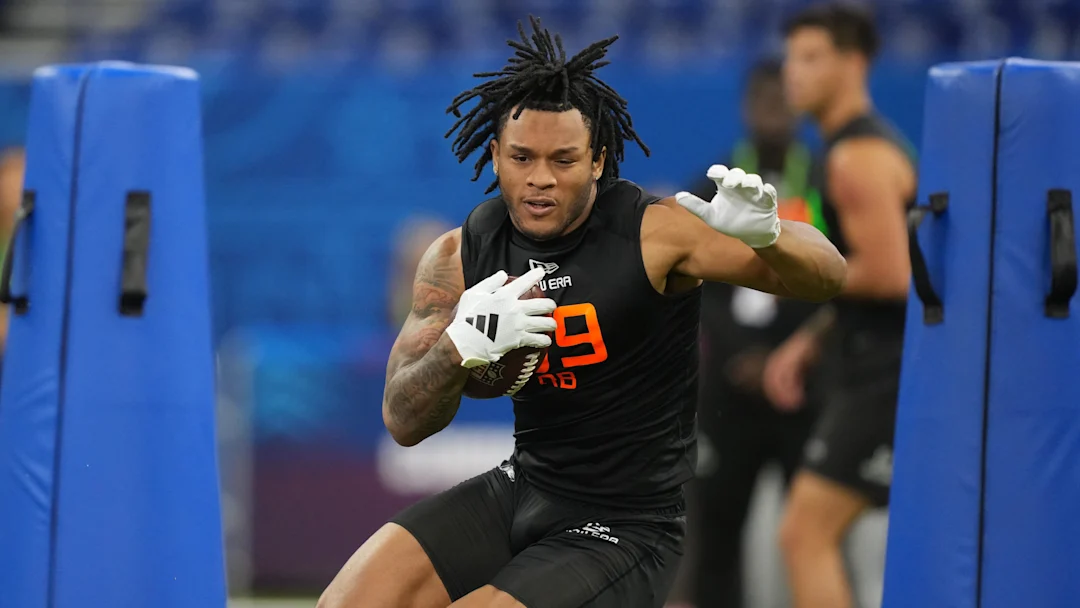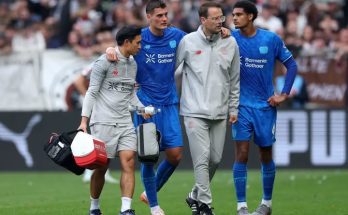The Chicago Bears, entering the 2025 NFL Draft, find themselves in a pivotal position to enhance their offensive backfield. With a rich history of formidable running backs, the franchise is keen on identifying talent that can rejuvenate their ground game. This analysis delves into potential running back targets for the Bears across each draft round, aligning player attributes with the team’s strategic needs.
In the first round, the Bears hold the 10th overall pick. This prime position offers an opportunity to select a game-changing talent. Ashton Jeanty of Boise State emerges as a top candidate. Standing at 5-foot-8½ and weighing 211 pounds, Jeanty is renowned for his explosive speed, having recorded a top speed of 21.7 miles per hour, the fastest among running backs in this draft class. His agility is complemented by impressive balance and vision, enabling him to break tackles effectively. In the 2024 season, Jeanty led the FBS in both yards from scrimmage and rushing yards, earning accolades such as the Maxwell Award and Doak Walker Award. His dynamic playmaking abilities position him as a potential All-Pro rookie candidate, making him a valuable asset for the Bears’ offense.
If the Bears opt to address other positional needs in the first round, the second round presents viable opportunities to secure a quality running back. Kaleb Johnson from Iowa stands out as a compelling choice. At 6-foot-1 and 225 pounds, Johnson combines size, speed, and power. In the 2024 season, he amassed 1,537 rushing yards and 21 touchdowns, averaging 6.4 yards per carry. Johnson’s vision and contact balance make him a formidable presence in the backfield. However, concerns regarding his maturity and long-speed may influence his draft position, potentially making him available in the second round.
TreVeyon Henderson of Ohio State also merits consideration in the second round. Measuring 5-foot-10⅛ and 208 pounds, Henderson is celebrated for his breakaway speed and agility. His 4.43-second 40-yard dash at the NFL Scouting Combine attests to his explosiveness. Henderson’s versatility as both a runner and receiver, coupled with his high football IQ, aligns with the Bears’ need for a multifaceted back.
The third round offers the Bears an opportunity to select a running back with a unique skill set. Cameron Skattebo from Arizona State fits this profile. Skattebo’s physical running style and exceptional pass-catching abilities distinguish him from his peers. Over his collegiate career, he accumulated 1,711 rushing yards and 21 touchdowns, showcasing his consistency and reliability. Skattebo’s prowess as a receiver, with 829 receiving yards since 2023, adds a valuable dimension to his profile, making him a potential three-down back for the Bears.
Omarion Hampton of North Carolina is another prospect the Bears might target in the third round. At 6-foot and 220 pounds, Hampton combines power and speed, making him effective in both power and zone-blocking schemes. His three-down versatility and playmaking abilities position him as a strong candidate to bolster the Bears’ running game.
In the fourth round, the Bears could consider Ollie Gordon II from Oklahoma State. Standing at 6-foot-1 and weighing 226 pounds, Gordon’s 2023 performance was remarkable, with 1,732 rushing yards and 21 touchdowns, averaging 6.1 yards per carry. His ability to break tackles and his consistent production make him a valuable prospect. However, his 2024 season saw a decline, rushing for 880 yards with 13 touchdowns, averaging 4.6 yards per carry. This dip may be attributed to team dynamics, but it could influence his draft stock, potentially making him available in the fourth round.
The fifth round presents an opportunity to select a developmental prospect with high upside. RJ Harvey from UCF could be an intriguing option. While he lacks top-end speed, Harvey’s quick feet and elusiveness make him effective at breaking tackles. His 211 forced missed tackles since 2022 rank fourth among FBS running backs, highlighting his ability to evade defenders. Harvey’s agility and vision could translate well to the Bears’ offensive scheme, offering a potential gem in the later rounds.
In the sixth round, the Bears might target a project back with potential for growth. DJ Giddens from Kansas State fits this mold. Known for his powerful yet agile running style, Giddens has shown flashes of brilliance but requires refinement in his game. The Bears’ coaching staff could develop his skills, harnessing his raw talent to contribute to the team’s future success.
The seventh round often features undrafted free agents who can make an impact. While specific prospects may not be widely scouted, the Bears could unearth a valuable asset by identifying a running back with a unique skill set or untapped potential. This strategy aligns with the team’s history of discovering talent beyond the early rounds.
The Bears’ approach to the 2025 NFL Draft should be strategic, balancing immediate needs with long-term potential. By targeting running backs across various rounds, the team can enhance its offensive capabilities, ensuring a dynamic and effective ground game for the seasons to come.



